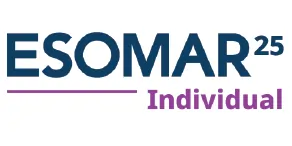Automotive and Transportation Published Insights
Published Date : Mar 2025
Cable Laying Vessel Market is estimated to be valued at USD 5.97 Bn in 2025 and is expected to reach USD 9.9 Bn in 2032, exhibiting a compound annual growth rate (CAGR) of 7.5% from 2025 to 2032. Cable laying vessel are specialized ships used to lay underwater cables on the seafloor for application... View more
Published Date : Mar 2025
The Global Electric Vehicle Market is estimated to be valued at USD 427.02 billion in 2025 and is expected to reach USD 713.07 billion by 2032, exhibiting a compound annual growth rate (CAGR) of 7.6% from 2025 to 2032... View more
Published Date : Mar 2025
The global car ramp market is witnessing steady growth in the recent years owing to rising automotive aftermarket and repair services industry across the globe. Car ramps are an essential tool used for car lifting and inspection during vehicle maintenance and repair a... View more
Published Date : Mar 2025
The battery leasing market provides an alternative to purchasing electric vehicle batteries. In this market, instead of owning the battery, EV owners pay a monthly subscription fee to use a battery that remains the property of the leasing company. There are two main t... View more
Published Date : Mar 2025
Bead wire is a crucial component in the manufacturing of tires. It is typically made from high-strength steel wire and is used to reinforce the structure of the tire. Bead wire provides the necessary strength and stability to prevent the tire from slipping off the whe... View more
Published Date : Mar 2025
Solar vehicles are a rapidly emerging sector in the transportation industry, representing an innovative solution to the increasing concerns over environmental sustainability. These vehicles rely on solar energy as their primary power source, distinguishing them from t... View more
Published Date : Mar 2025
The U.S. Electric Vehicle Market is estimated to be valued at USD 95.90 billion in 2025 and is expected to reach USD 221.46 billion by 2032, exhibiting a compound annual growth rate (CAGR) of 12.7% from 2025 to 2032. ... View more
Published Date : Mar 2025
Global Flexfuel Cars Market is estimated to be valued at USD 159.57 Bn in 2025 and is expected to reach USD 380.08 Bn in 2032, exhibiting a compound annual growth rate (CAGR) of 13.2% from 2025 to 2032. Flexfuel cars, also known as flexfuel vehicles (FFVs), are automobiles that can run on gasoline, ... View more
Published Date : Mar 2025
The term "premium interior trim" describes the high-quality materials, finishes, and parts used to improve the interior design, comfort, and luxury of cars, airplanes, and ships. It includes features like advanced seating options, leather upholstery, wood veneers, met... View more
Published Date : Mar 2025
Electric vehicle batteries can last a long time, however, eventually all battery packs reach their end-of-life. At that point, the battery’s components will either be recycled or sent to a landfill where they can leach chemicals into groundwater and pollute the ... View more
Published Date : Mar 2025
Drive by Wire is a technology that is used in the automobile industry to carry out several functions through electronic inputs. The vehicles equipped with this technology include systems that can perform certain mechanical functions based on the electrical signals. Th... View more
Published Date : Mar 2025
Locomotive leasing has become a preferred solution in the railway industry, offering flexibility, cost savings, and operational efficiency. Leasing provides access to a diverse fleet of locomotives tailored to specific needs without the long-term financial commitment ... View more
Published Date : Mar 2025
The Global Panoramic Sunroof Market is estimated to be valued at USD 2.75 billion in 2025 and is expected to reach USD 4.65 billion by 2032, exhibiting a compound annual growth rate (CAGR) of 7.8% from 2025 to 2032.... View more
Published Date : Mar 2025
Vehicle to grid technology is an advanced technology that allows the charging of electric vehicle from power grid. This can help in achieving clean energy goals such as zero-carbon emissions in the near future. It allows energy flow in both directions, from supplier t... View more
Published Date : Mar 2025
Truck platooning is an automated driving technology that tethers multiple trucks together on the road. This technology is able to reduce fuel costs and CO2 emissions, while supporting more efficient fleet operations. The benefits of truck platooning are numerous, incl... View more
Published Date : Mar 2025
Trailers are light and easy to maneuver, allowing user to access tight spots or off-the-beaten paths that may be difficult for bigger vehicles to reach. They're also easier to set up than traditional RVs, and come with a wide range of features that improve safety and ... View more
Published Date : Mar 2025
The accumulator performs many tasks in the air conditioning system, including maintaining pressure, storing and recapture energy, reducing pressure peaks, powering chassis suspensions, and dampening shock, vibration, and pulsations. Accumulators also reduce pump power... View more
Published Date : Mar 2025
Smart Mobility aims to improve the efficiency and safety of transportation. It uses digital technology to connect different transportation modes through sensors and real-time data analytics. Several benefits of Smart Mobility inclu... View more






